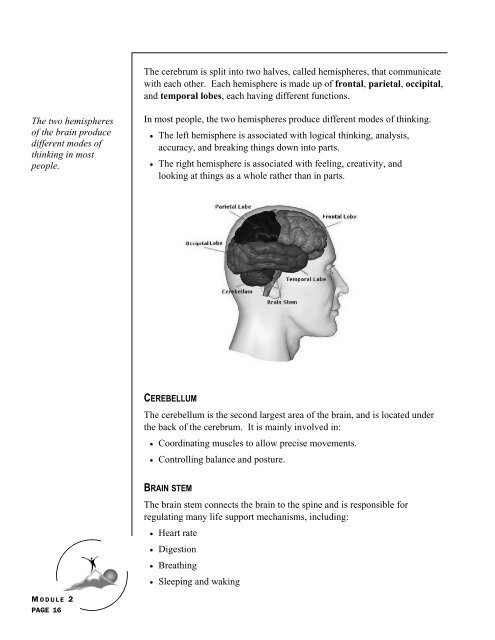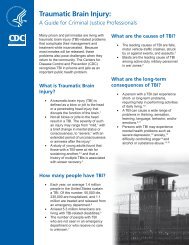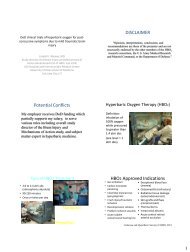caregiver tip - Traumatic Brain Injury Council
caregiver tip - Traumatic Brain Injury Council
caregiver tip - Traumatic Brain Injury Council
You also want an ePaper? Increase the reach of your titles
YUMPU automatically turns print PDFs into web optimized ePapers that Google loves.
The cerebrum is split into two halves, called hemispheres, that communicate<br />
with each other. Each hemisphere is made up of frontal, parietal, occipital,<br />
and temporal lobes, each having different functions.<br />
The two hemispheres<br />
of the brain produce<br />
different modes of<br />
thinking in most<br />
people.<br />
In most people, the two hemispheres produce different modes of thinking.<br />
• The left hemisphere is associated with logical thinking, analysis,<br />
accuracy, and breaking things down into parts.<br />
• The right hemisphere is associated with feeling, creativity, and<br />
looking at things as a whole rather than in parts.<br />
CEREBELLUM<br />
The cerebellum is the second largest area of the brain, and is located under<br />
the back of the cerebrum. It is mainly involved in:<br />
• Coordinating muscles to allow precise movements.<br />
• Controlling balance and posture.<br />
BRAIN STEM<br />
The brain stem connects the brain to the spine and is responsible for<br />
regulating many life support mechanisms, including:<br />
• Heart rate<br />
• Digestion<br />
• Breathing<br />
• Sleeping and waking<br />
M ODULE 2<br />
PAGE 16






